In our previous article about choosing the right paper for calligraphy beginners, we covered the basics of paper selection. Today, we’ll focus on an equally important topic: What are the best calligraphy brushes for beginners?
Many beginners make the mistake of simply looking for the cheapest brushes or those with the highest sales numbers. However, these factors shouldn’t be your main considerations when choosing a calligraphy brush. Let me share some essential details that every beginner needs to know about selecting their first brush.
First: Avoid Pure Goat Hair Brushes as a Beginner
You might have heard someone say: “Beginners must use goat hair brushes because they’re soft and perfect for practicing brush control.” While this sounds reasonable, it’s actually not based on solid evidence.
This article mentions wolf hair brushes. Regarding wolf hair brushes, this article is worth reading:
How to Identify a Genuine Langhao (Wolf Hair/Weasel Hair) Brush
Historical records show that goat hair brushes only became popular after the Southern Song Dynasty, and weren’t widely adopted until after the early Qing Dynasty. During the Qing era, artists preferred subtle and restrained styles rather than showing off their skills, so only the soft goat hair brushes could meet those artistic requirements.
Before that period, everyone used harder brushes. Legend has it that Wang Xizhi, the famous calligrapher, likely used a mouse whisker brush when he wrote the famous Orchid Pavilion Preface. While we’re still not sure exactly what type of hair “mouse whisker” refers to, it clearly indicates he used a relatively hard brush.
Here’s the problem with soft brushes: they don’t necessarily help you develop proper brush strength. Building brush control requires active force and technique. Goat hair brushes are so soft that they can actually create bad habits, like dragging the brush instead of controlling it actively. This prevents beginners from developing proper brush handling skills.
Second: Stay Away from Long-Tip Brushes
Genuine long-tip brushes made entirely from animal hair are extremely expensive. I once visited Master Ye Keqin and saw some premium long-tip goat hair brushes in his collection. The brush tips were about 6 centimeters long, and these brushes have very low production rates. Sometimes it takes several months or even over a year just to collect enough hair material for a single brush.
The same applies to wolf hair and purple hair brushes – the longer they are, the more expensive they become if they’re made from genuine materials.

Premium goat hair brushes from Master Ye Keqin’s collection
Because of market demand and limited supply, many brush manufacturers substitute nylon for real animal hair. Some use nylon to fake goat hair, while others use dyed nylon to imitate wolf hair. Nylon brushes have good elasticity, but they lack the flexibility of genuine goat hair and don’t help beginners develop proper touch and feel.
(Note: I’m not saying nylon brushes are bad – it’s just a matter of personal preference. In my experience, brushes with too much nylon content tend to be stiff in an uncontrollable way. A small amount of nylon can be useful for reinforcement in a brush.)
Long-tip brushes, like pure goat hair brushes, can lead to the bad habit of dragging the brush. Therefore, I don’t recommend long-tip goat hair brushes for calligraphy beginners.
However, if you’re specifically learning seal script (zhuan shu), I would recommend long-tip goat hair brushes because their thin, elongated tips are better suited for creating the consistent line thickness that seal script requires.
Third: Avoid Brushes with Too Much Nylon Content
When I first started learning calligraphy, I particularly liked brushes with high nylon content because I thought they had good tip formation, sufficient elasticity, and were easy to “control.” As my skills and understanding improved, I gradually moved away from these brushes and began preferring mixed-hair brushes that were primarily goat hair, or goat-wolf combinations. I found these brushes much more comfortable and responsive to use.
Fourth: Best Calligraphy Brushes for Beginners
Mixed-Hair is the Top Choice
For beginners, I strongly recommend mixed-hair brushes, with hard-hair brushes as the second option. The main types of hard-hair brushes include wolf hair, purple hair, and chicken feather brushes.
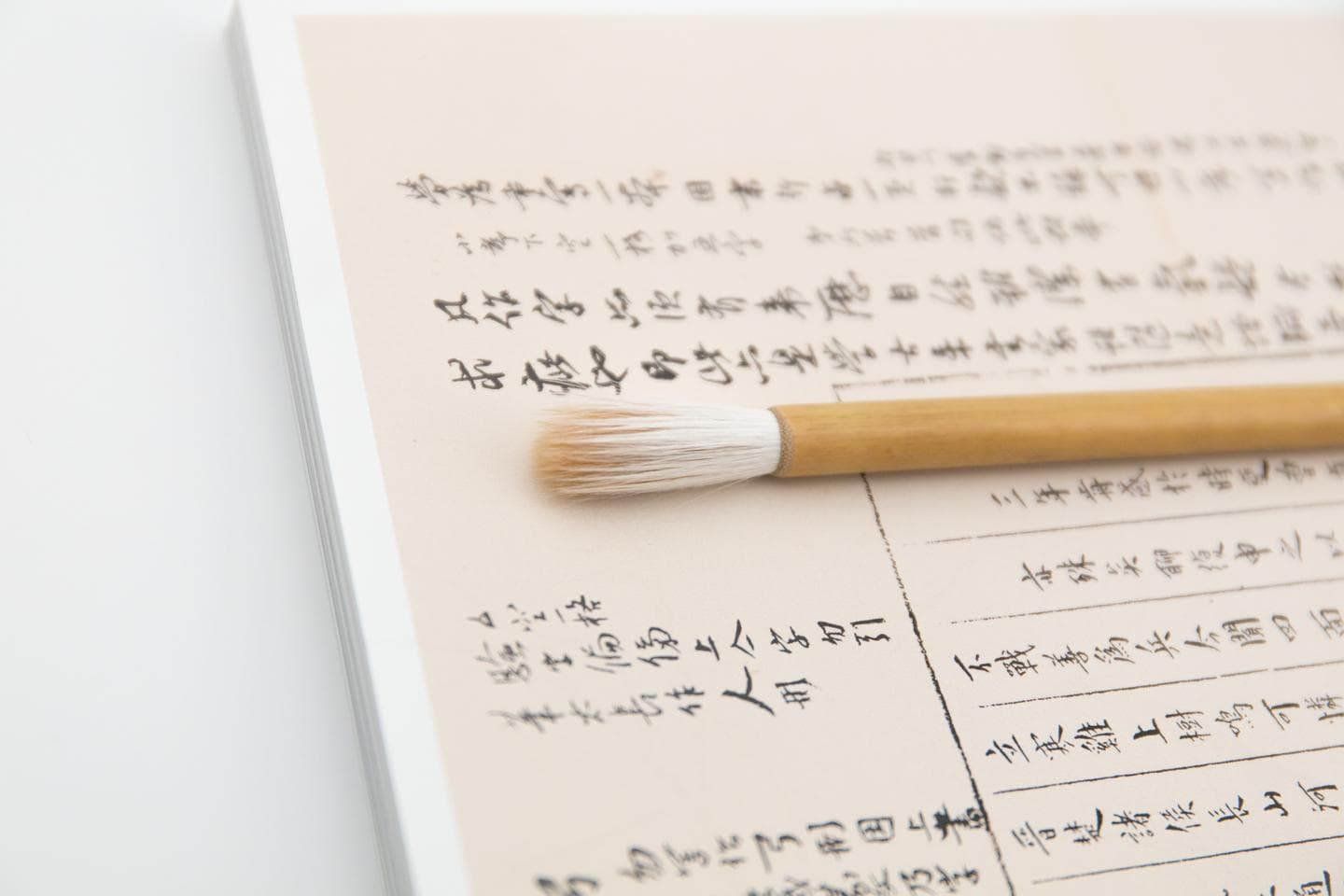
Qiming Wenfang’s Qingzhuo wolf-goat mixed brush, with white goat hair and yellow wolf hair.
Purple hair comes from wild rabbits and is even more expensive than wolf hair. In terms of elasticity and hardness: purple hair > wolf hair > goat hair. However, purple hair brushes don’t last as long (in terms of durability: goat hair > wolf hair > purple hair), making them too expensive for most people. I don’t recommend purple hair brushes for beginners.
While pure wolf hair and purple hair brushes are expensive, mixed-hair brushes offer a great solution. Mixed-hair brushes typically use high-quality hair for the tip and supplement it with more affordable materials.
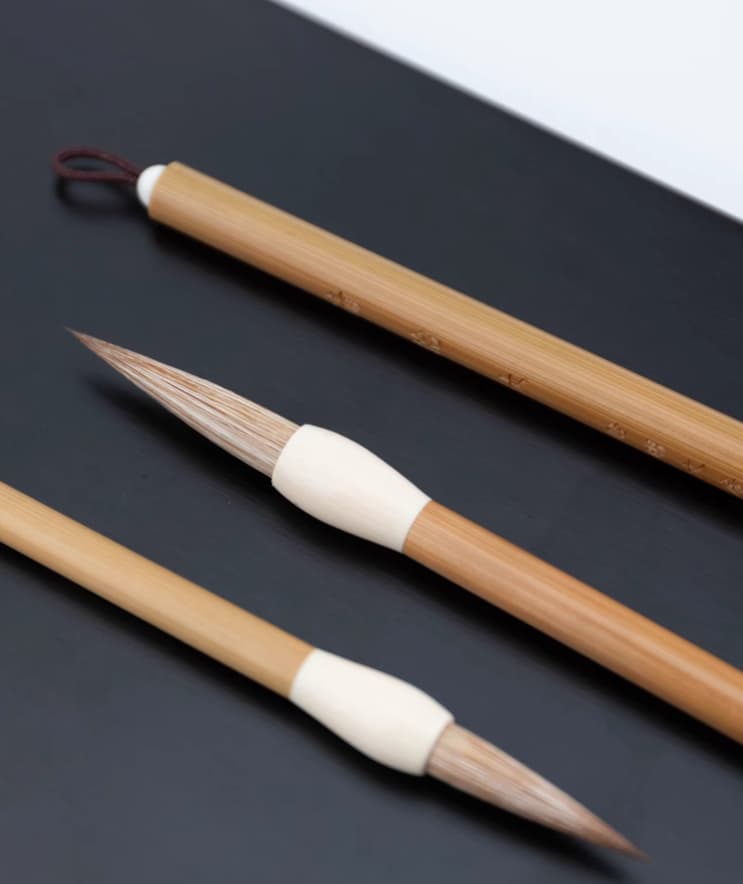
The Qingyi brush from Qiming Wenfang
For example, our Qingyi brush uses 45% wolf hair, 45% goat hair, supplemented with 7% pig bristle and 3% nylon. This combination reduces manufacturing costs while still providing excellent writing performance, making it perfect for beginners.
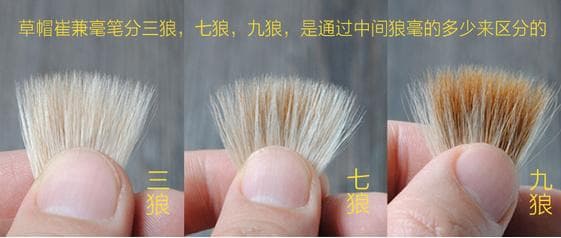
Caomao Cui’s mixed-hair brush with yellow wolf hair and white goat hair. More white indicates higher goat hair content.
I recommend mixed-hair brushes for beginners. Hard-hair dominant mixed brushes include combinations like 70% purple hair with 30% goat hair, or wolf-goat combinations with 70% wolf hair and 30% goat hair. Soft-hair dominant mixed brushes combine goat hair with pig bristles and nylon. These brushes offer good quality at reasonable prices, making them ideal for beginners.
Final Recommendation
If you’re just starting with calligraphy, I suggest beginning with slow writing styles like regular script (kaishu), clerical script (lishu), or seal script (zhuanshu). I’ve collected some videos and tutorials that are perfect for beginners – if you’re interested, feel free to contact me for the links.
Remember, choosing the right brush is crucial for developing proper technique and enjoying your calligraphy journey. Take time to understand these basics, and you’ll be well on your way to mastering this beautiful art form.
You might also be interested in these articles:
Top 10 Chinese Calligraphy Brushes: The Ultimate Guide to Selection and Care
Top 10 Chinese Xuan Paper Brands: Selection Guide & Care Tips
The 5 Best Chinese Ink Brands: Properties, Selection Criteria & Care Guide

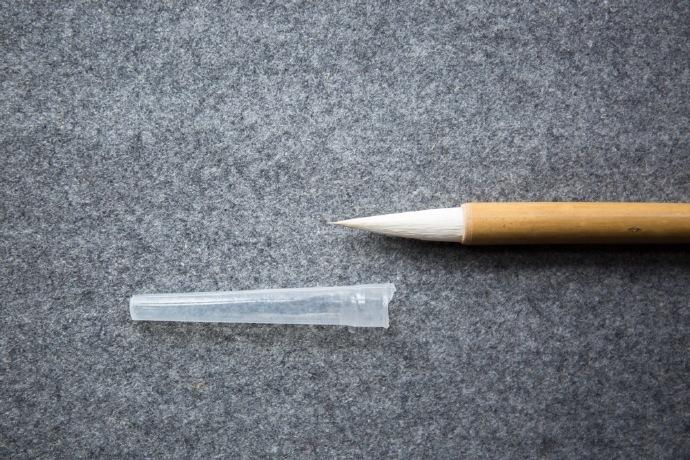
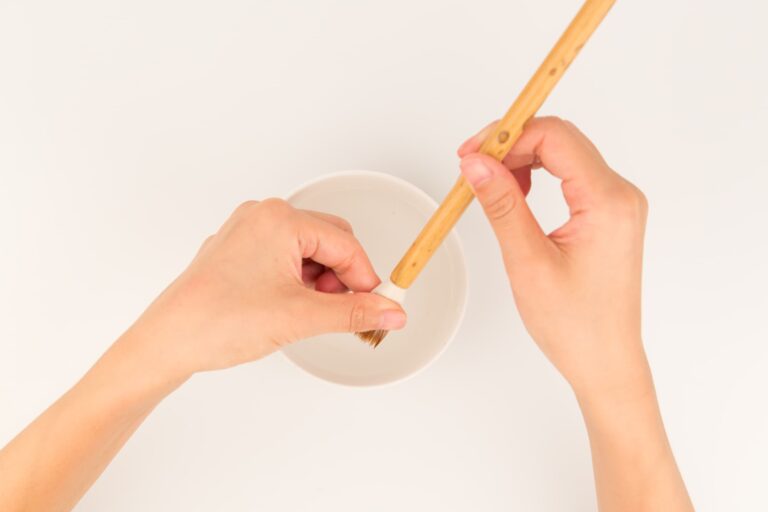
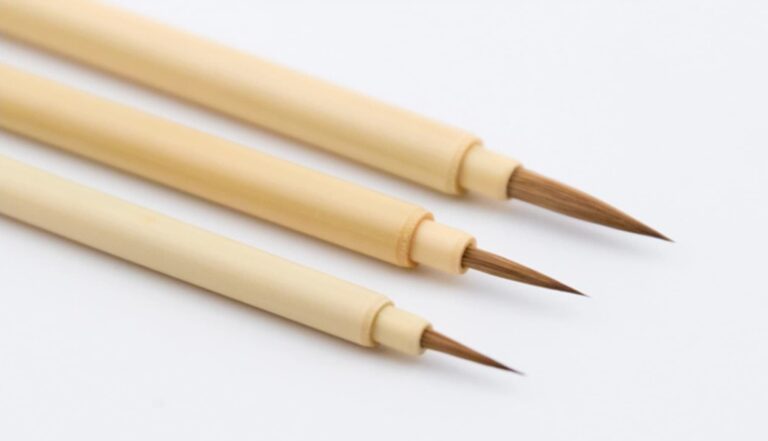
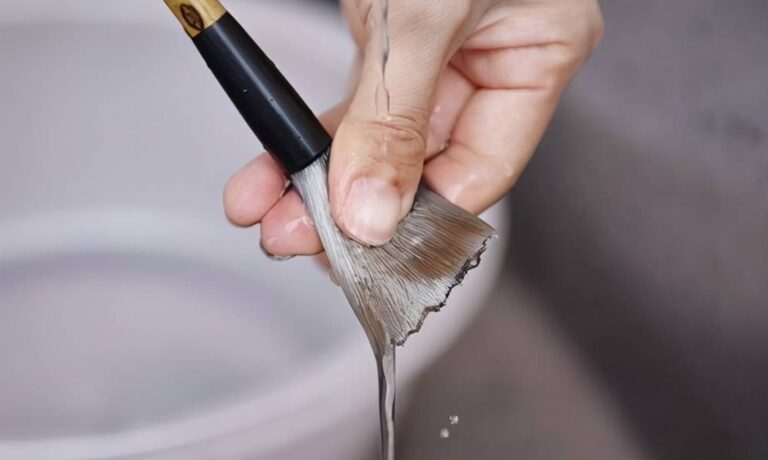
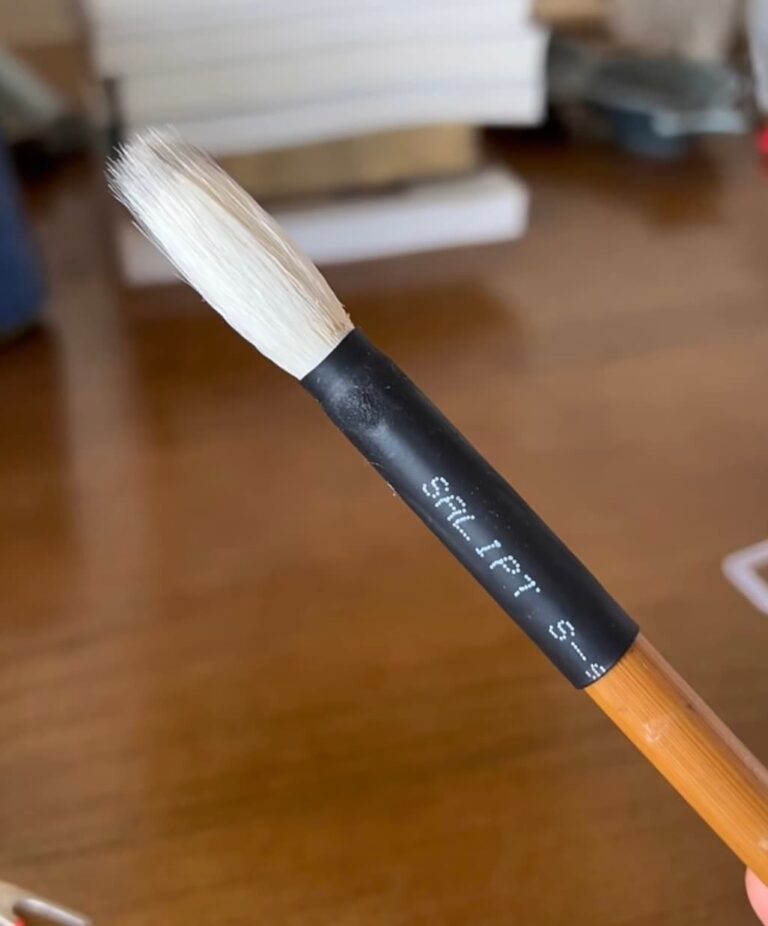
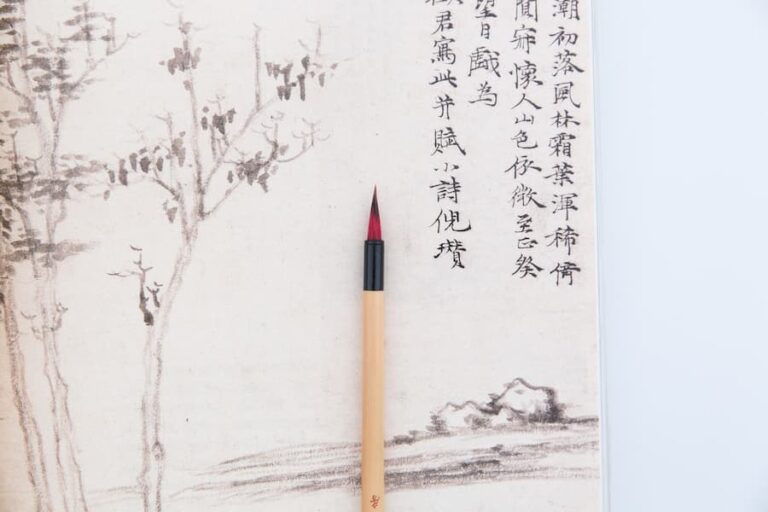
You have observed very interesting points! ps decent site. “Formal education will make you a living self-education will make you a fortune.” by Jim Rohn.
Thank you. I notice that you like to include a famous quote every time you leave me a message. That’s very nice.